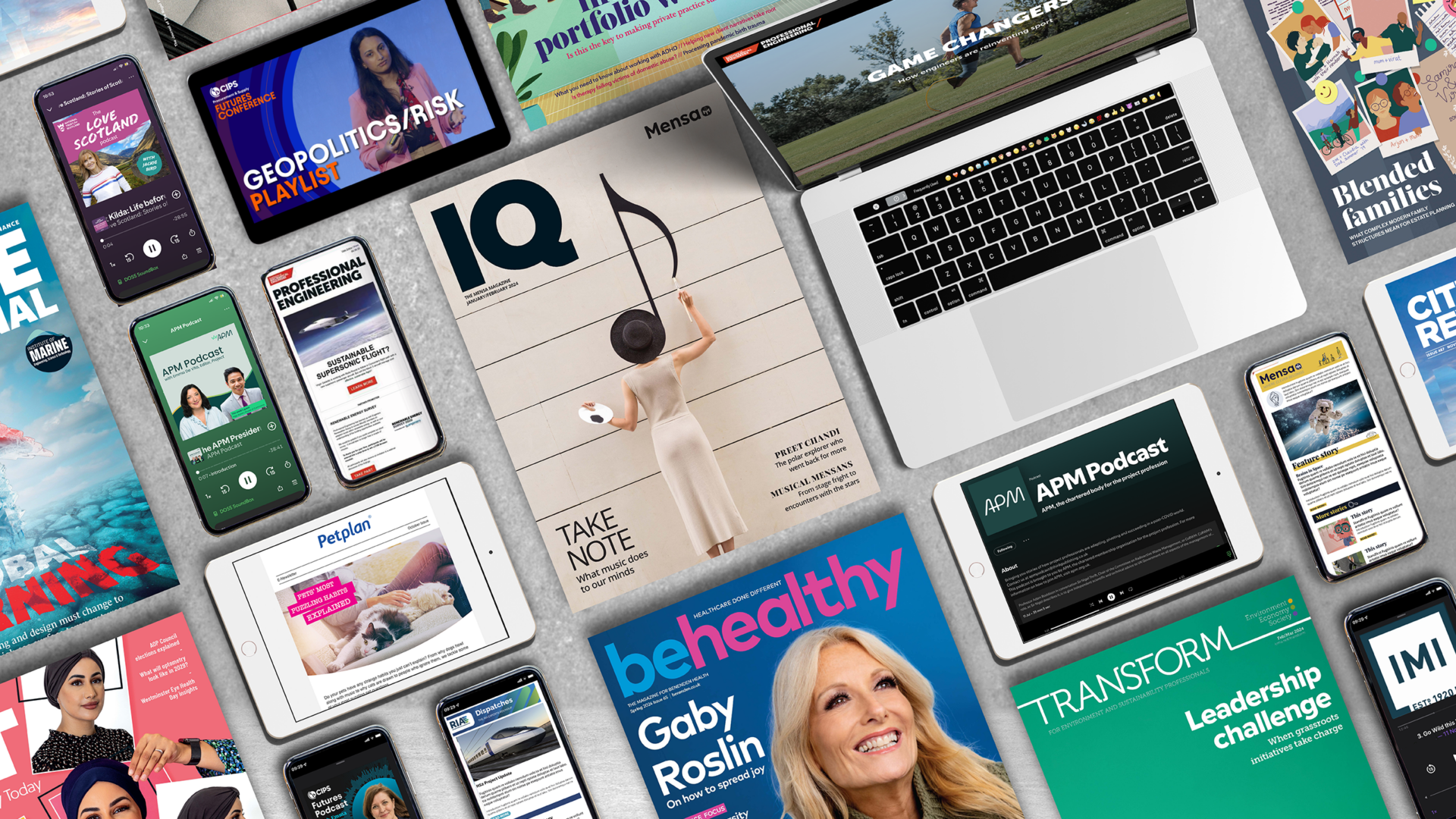Membership communications, much like commercial publishing, is evolving at breakneck speed.
As CEO of Think, an agency specialising in communications strategies for membership organisations, I am immersed in this world of constant change. In this article, I will share five trends from the broader commercial publishing sector that can inform and invigorate the strategies of professional membership organisations.
The challenge we face
I am inundated with over 20 e-newsletters daily, covering publishing, communications, marketing and events – so I am acutely aware of the digital content overload we all face. Keeping pace is daunting. It requires us to be specialists in many domains that are in a constant state of flux.
In commercial publishing, therefore, the key question is not ‘what’s happening now?’, but ‘what’s next?’.
Below, I explore five topics that are reshaping commercial publishers’ strategies and consider how they apply to the professional membership sector.
1. Paywalls: bridging accessibility with revenue
Paywalls are a perennial topic in publishing, but the conversation has shifted from ‘to have or not to have?’ to ‘which one is best?’. The freemium model is popular, offering a balance between free access (to attract a wide readership) and premium content behind a paywall (to monetise dedicated audiences). This approach not only drives traffic, but also sustains revenue streams crucial for long-term viability.
Interestingly, 87% of UK consumers are willing to pay for content with their data. Membership organisations therefore need a nuanced approach to monetisation that blends membership value with useful insights about their potential future members.
2. Lead generation: the digital imperative
In B2B publishing, lead generation is a top priority for marketers. With success being measured against stringent metrics, the focus on generating quantifiable leads has intensified. Digital marketing strategies need to be sophisticated – capable of nurturing prospects through every stage, from demand creation to lead conversion.
Both publishers and membership organisations must continually reassess their digital infrastructure. Does it optimise lead generation while aligning with advertiser expectations and data protection standards?
3. Newsletters: the resilient power of personalised content
Despite the digital deluge, newsletters remain stalwart in driving website traffic and customer engagement. Their permission-based nature and ability to deliver niche, personalised content make them invaluable for acquiring and retaining members.
The challenge for membership organisations is to evolve from traditional institutional formats to more personalised (and personality-driven) approaches that are reflective of their brand’s voice.
4. Podcasts: riding the audio wave
Commercial publishers embraced podcasts years ago, but the membership sector is still catching up. The surge in their consumption underscores podcasts’ effectiveness in engaging diverse audiences, particularly among younger demographics. Familiar voices can enhance engagement, while the opportunity to experiment with format can broaden reach.
The potential rewards? Richer content, more engaged members and diversification of revenue streams.
5. Print: the renaissance of tangibility
Although digital dominates, print media is experiencing a renaissance. Its tactile nature and enduring consumer trust give print unique advantages in a digital-first world. Titles like Vogue and BBC History showcase print’s resurgence, catering to audiences who crave deeper engagement and editorial integrity.
Membership organisations should rethink print’s role within their communication strategies. It is not a relic of the past, but rather a complementary channel enriching our media mix.
Looking ahead: challenges and opportunities
For membership organisations, several themes demand further consideration:
• Digital content production: the cost and complexity of producing digital content necessitate robust strategies to maximise ROI and engagement.
• Technological advancements: AI and complex algorithms are pivotal to optimising content delivery and consumer interaction.
• Skills gap: equipping teams with digital acumen remains a pressing challenge, especially as roles continue to evolve.
• Events: sustaining engagement and revenue growth in the post-pandemic era demands an innovative approach to events.
• Data utilisation: collecting data is not enough; effective data utilisation and segmentation are the key to personalised member experiences.
• Social media: these platforms remain crucial, although monetisation strategies are often lacking.
And finally, let’s not forget the broader implications of AI for both publishing and the membership sector. As we continue to innovate, let’s be mindful of ethical considerations and the need to secure the longevity of our organisations.
Want to discuss the future of membership comms or commercial publishing? I’d love to hear from you. Please email me at ian@thinkpublishing.co.uk





